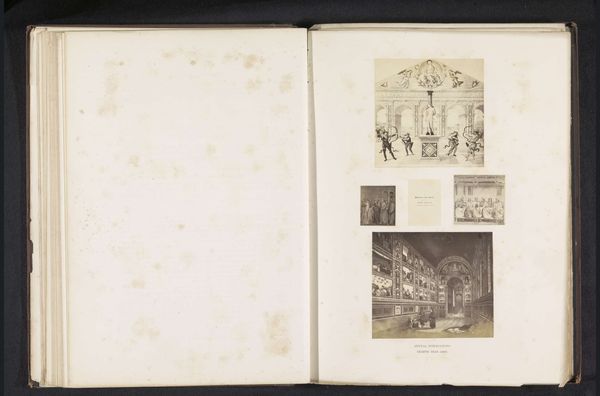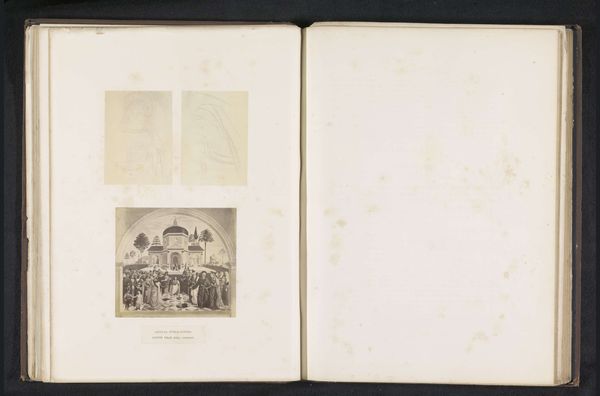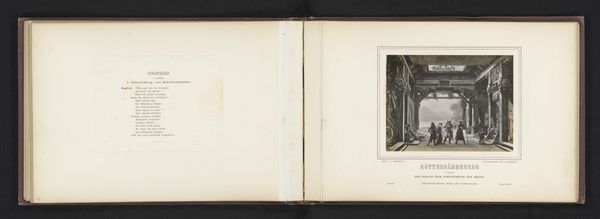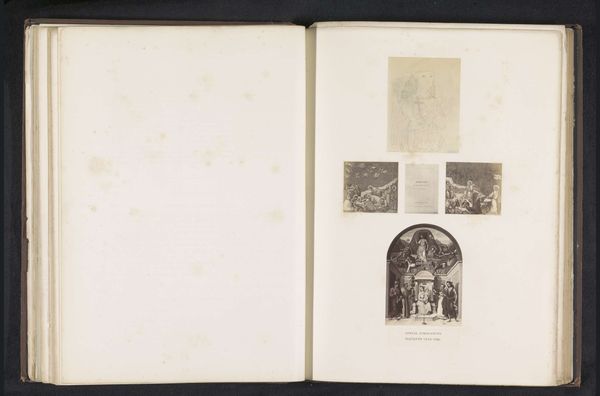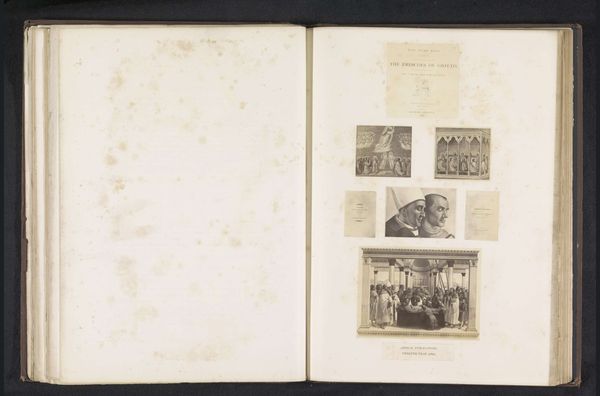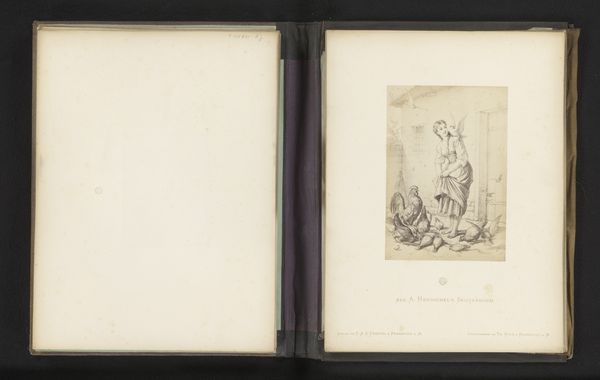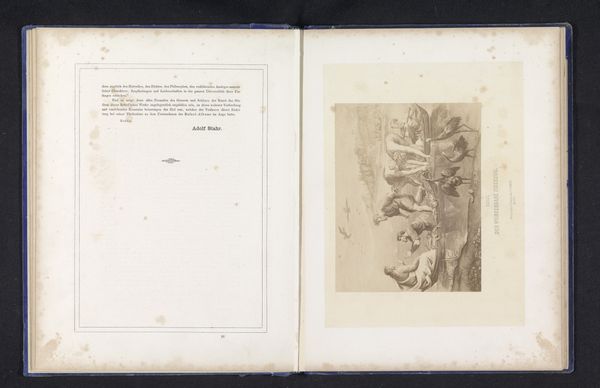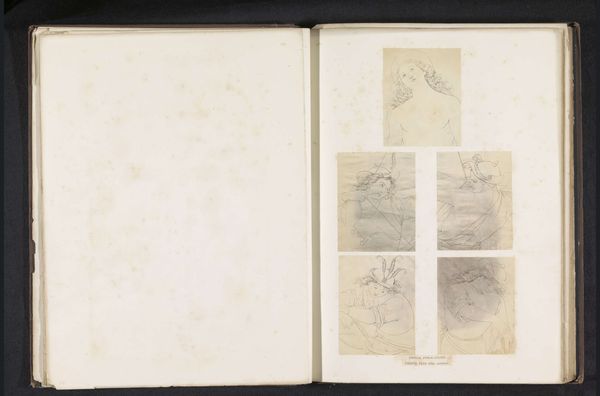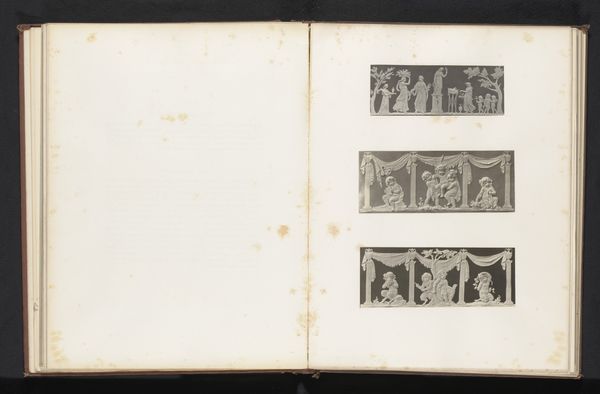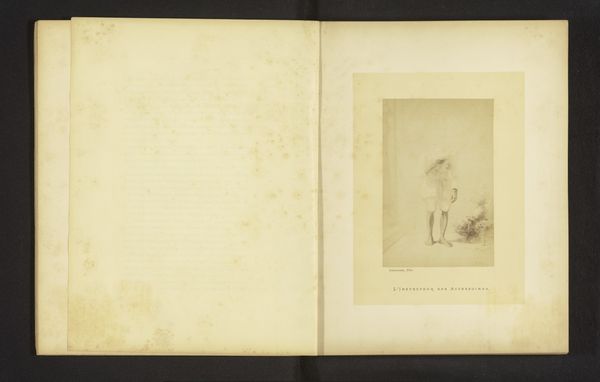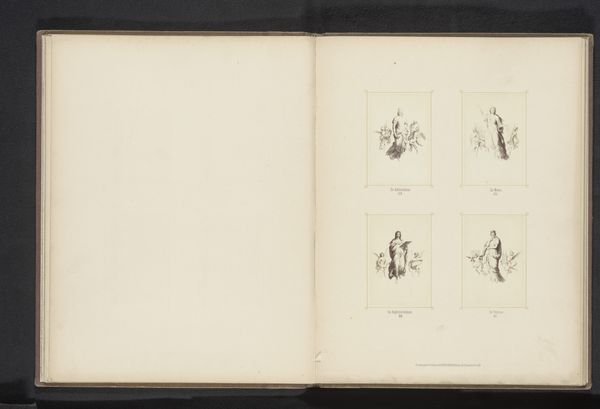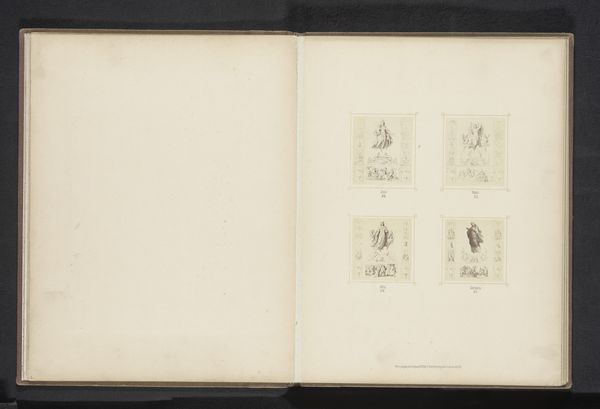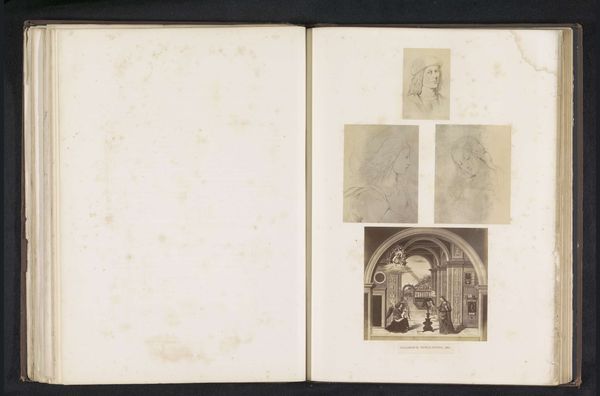
Zes fotoreproducties van een publicatie door de Arundel Society met tekeningen van Fra Angelico before 1869
0:00
0:00
drawing, print, engraving
#
drawing
# print
#
11_renaissance
#
engraving
Dimensions: height 378 mm, width 290 mm
Copyright: Rijks Museum: Open Domain
Editor: This is an interesting page from a publication of six photorealistic engravings of Fra Angelico's drawings, dated before 1869. They seem pretty small on this page of the book. They almost look like pale ghosts. What strikes you most about these reproductions? Curator: What resonates for me is how this compilation itself speaks to power dynamics within art history. These are reproductions of Fra Angelico’s work, made accessible through printmaking by the Arundel Society. Who was the Arundel Society, and who were they making this art accessible to? These reproductions democratize art, in a way, making Renaissance art available outside the elite circles who could originally access it, yet they are still mediated through a particular lens. Editor: That’s fascinating. I never thought about access to art in that way before. So, it’s about who gets to control the narrative and how the art is disseminated? Curator: Precisely! And how that shapes our understanding of art history. Fra Angelico was a significant figure of the early Renaissance, known for his religious works imbued with spirituality. But by reproducing them via engravings, what aspects get amplified or diminished? We need to question who is controlling these reproductions and the influence of class and patronage on the visibility of artists. Editor: So, these images aren't just about religion or art for art’s sake, they’re deeply intertwined with socio-economic power? Curator: Absolutely. Art rarely exists in a vacuum. These reproductions reflect not only the artistry of Fra Angelico but also the cultural and political forces at play in the 19th century that deemed his work worthy of wider distribution, under very specific conditions. They wanted it consumed through the Victorian sensibilities that underpinned their control of culture. Editor: This makes me rethink the way I view art history. Thank you for providing an alternative perspective. Curator: It's about always questioning, pushing the boundaries, and understanding that art is always in conversation with the world around it.
Comments
No comments
Be the first to comment and join the conversation on the ultimate creative platform.
